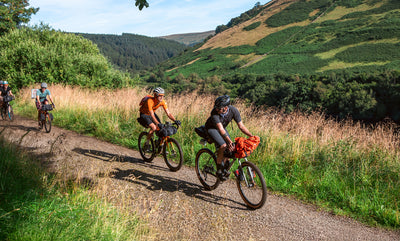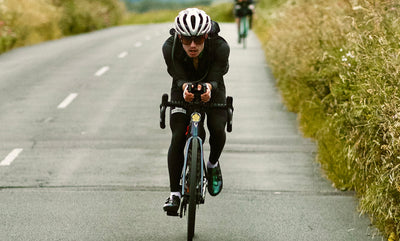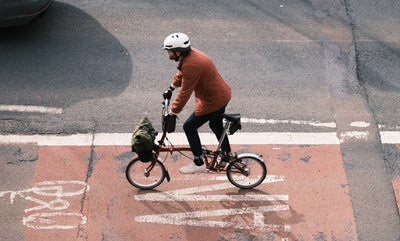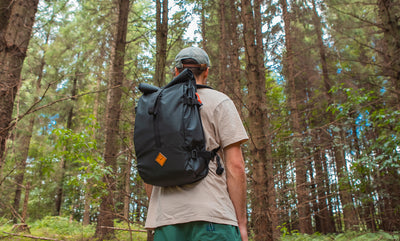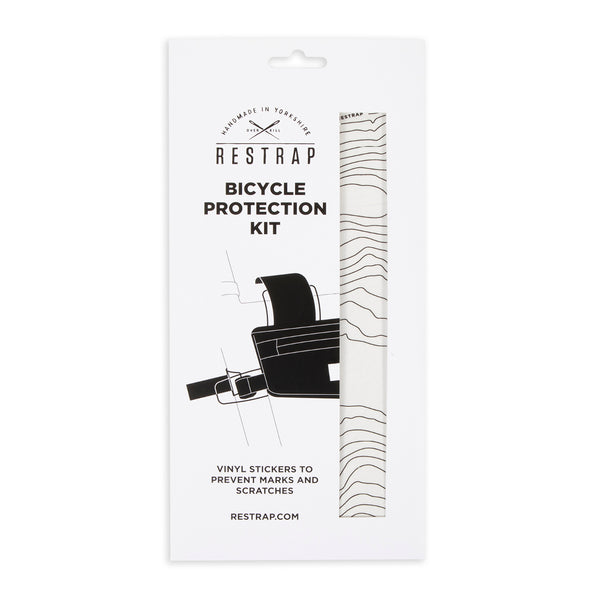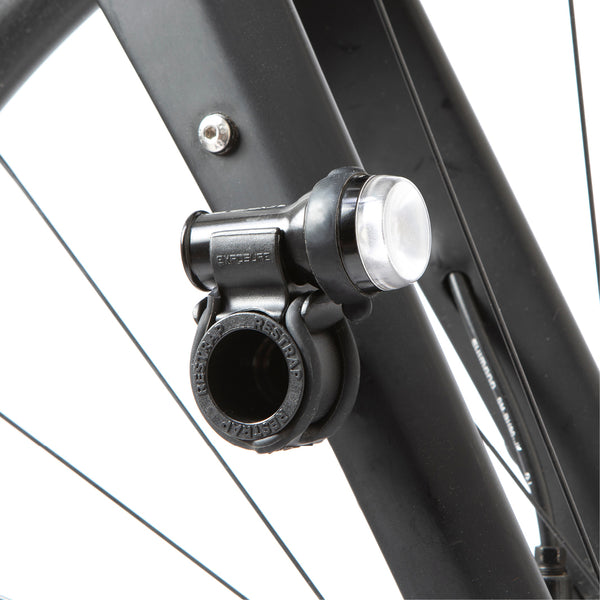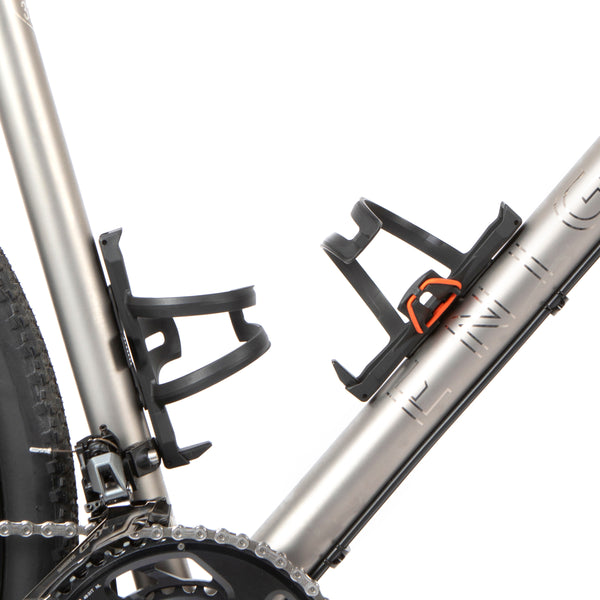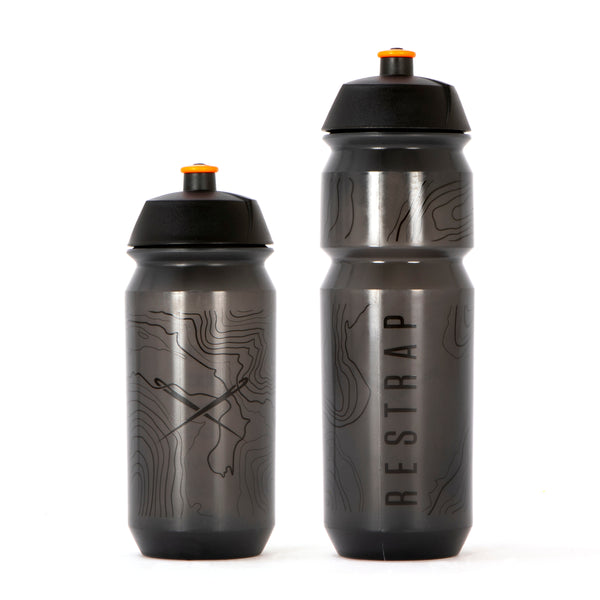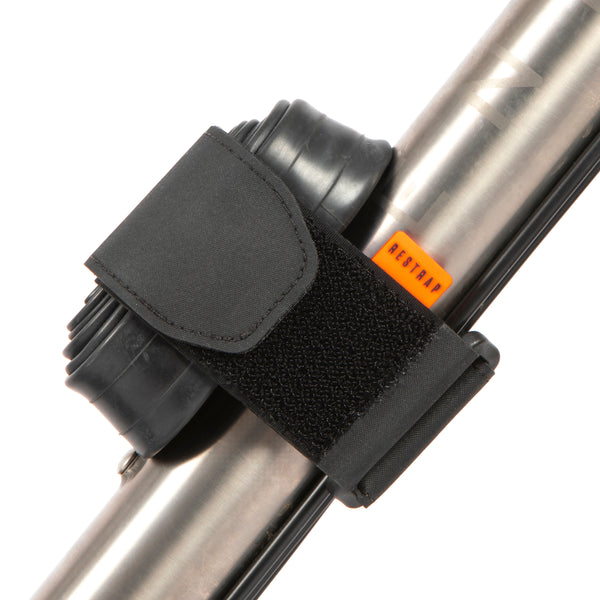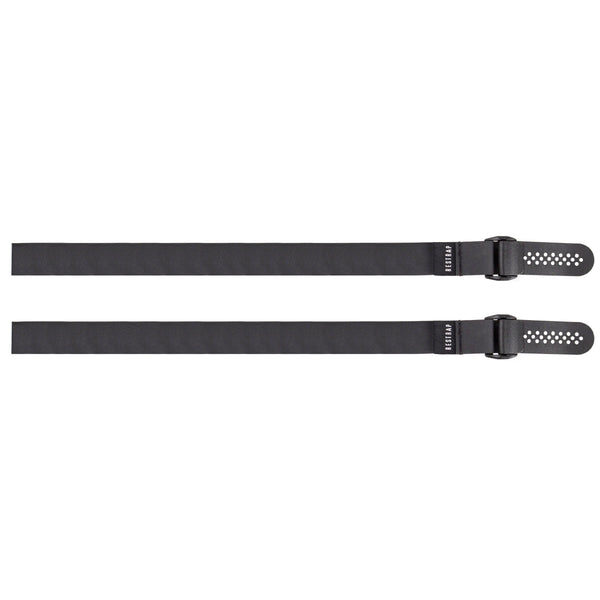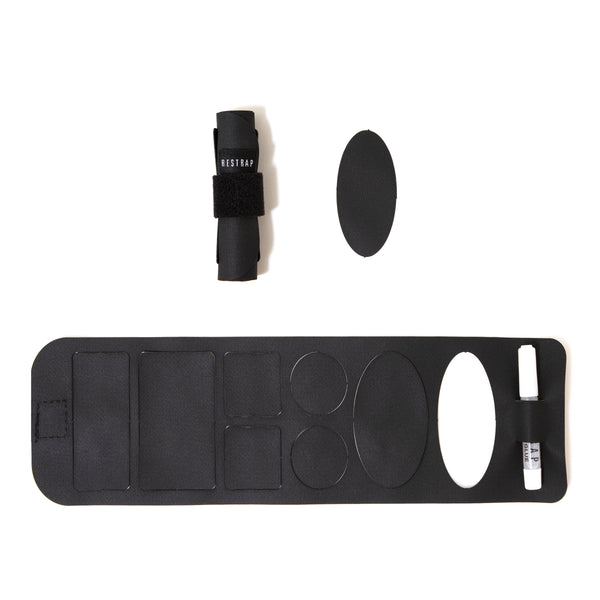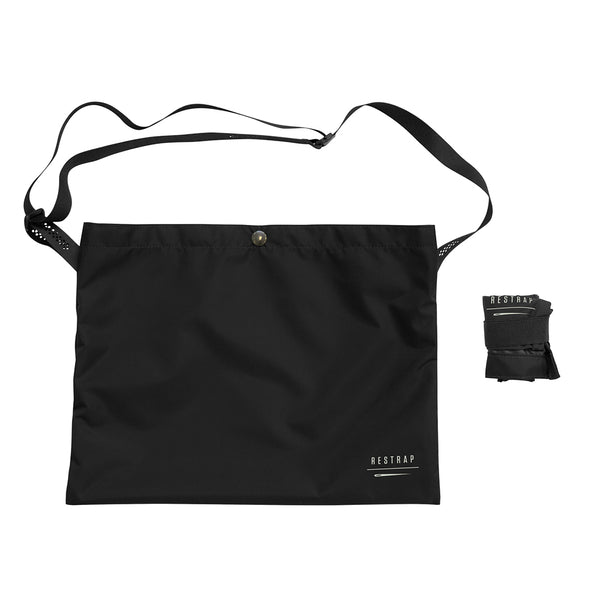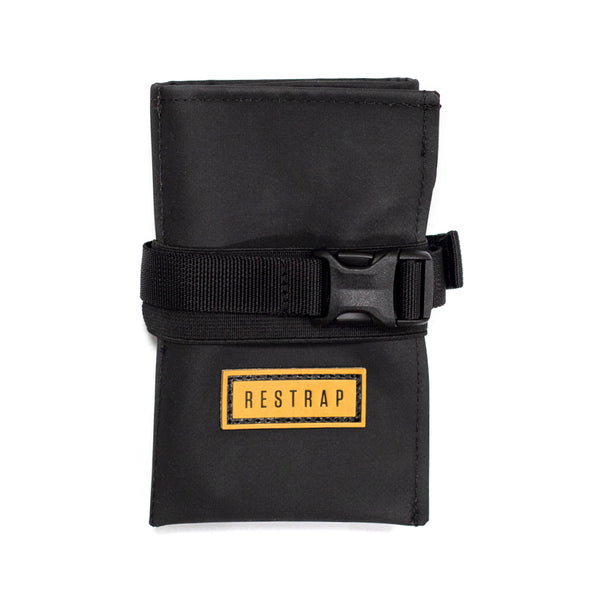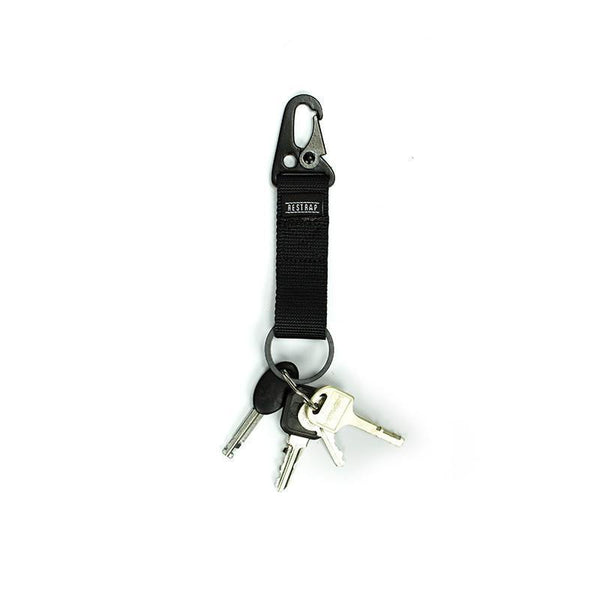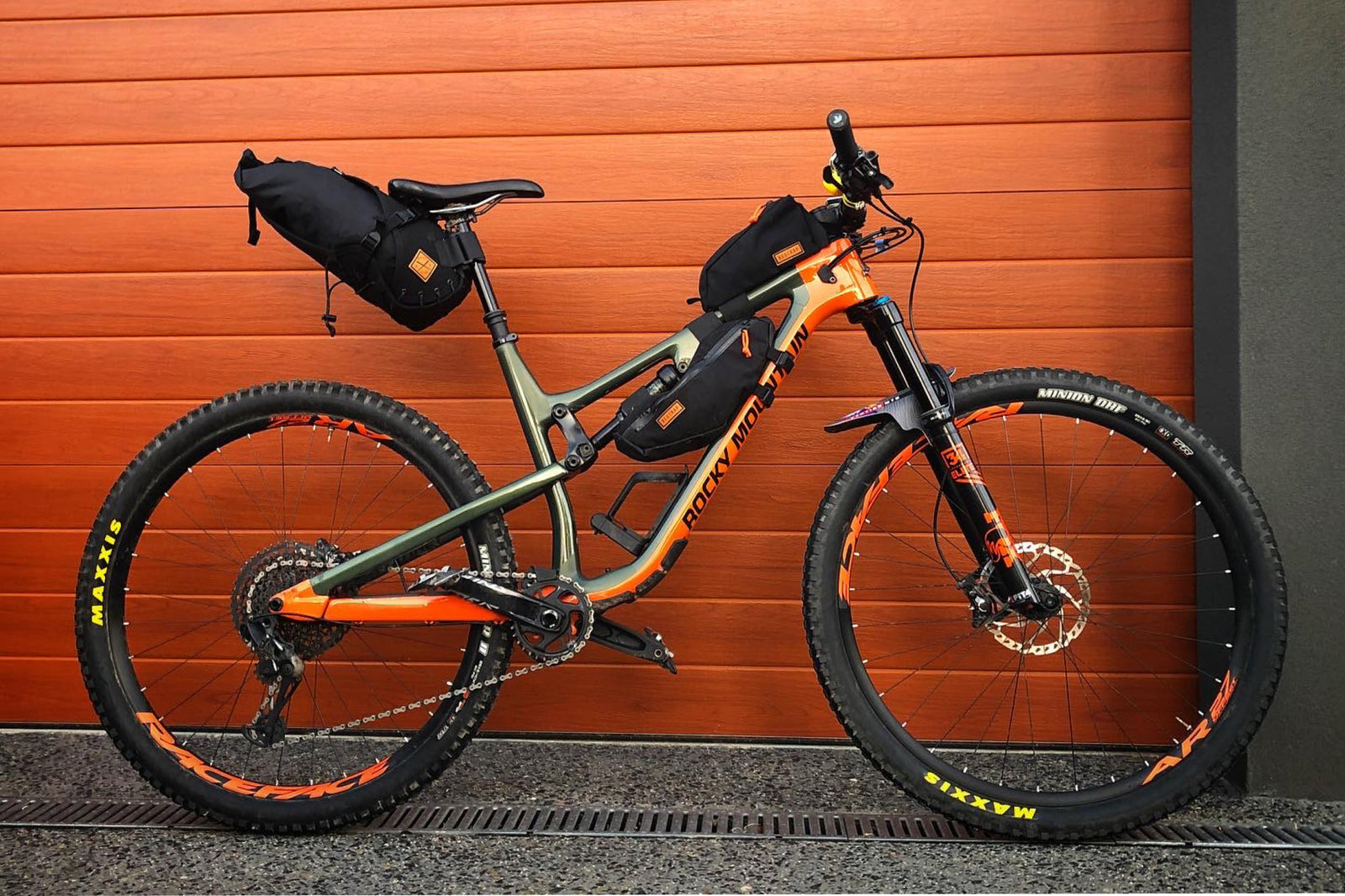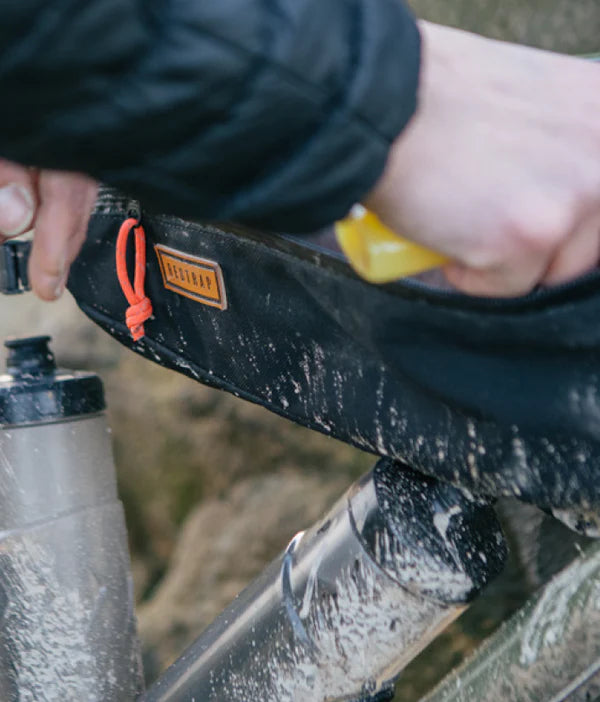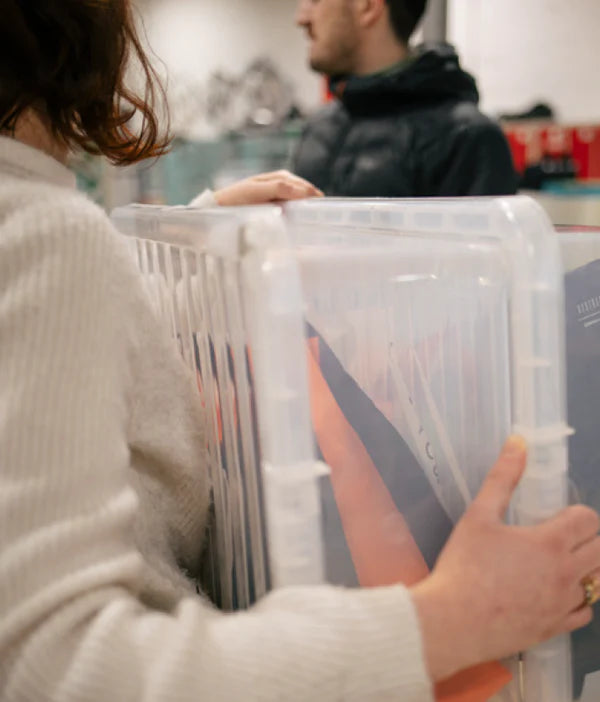Your cart is empty!
Bikepacking 101: How To Get Started

Picture this: a winding road, you, your bike, and all you need, heading wherever you please. This, my friend, is bike packing. Cyclists the world over are waking up to the possibilities their bike can offer them. And if you are yet to take the plunge and have a go, then now is the time to start. Let’s face it, what is stopping you?
For some of our customers, the answer to that is “fear”. It’s all very well owning a bike and buying a few bags. But what next? Where do you start? Where do you go? And more importantly, will you survive?
Here at Restrap we are somewhat seasoned in the art of planning a good bike pack, and – being beginners once ourselves – well remember these barriers. We’ve pulled together some top tips to get you started on your new life as a Bike Packer and get you hitting the road (or trails) with confidence.
What Bike Do I Need?
Yes, you’ll need one of these. But which one you take depends on the kind of tour you plan on taking. Restrap bags are designed to fit any bike – this means you can mix your touring up, depending on your mood and plans.
A Road Bike Tour
Sometimes the simplest option. Navigation is straightforward, there are no concerns over rough terrain slowing you down and you can be pretty sure of how long it’s going to take you. Plus, pubs, cafes and shops (usually) abound, making light work of refuelling.
If you’re starting out and want to keep things straight forward, you can’t go wrong with sticking to roads.
A Gravel Bike Tour
If you’re after something a little more gruelling, taking a gravel bike makes for a really flexible trip. You can cover distances quite nicely on the roads yet are free to swoop off down alluring bridleways and forest tracks should the fancy take you.
If you plan to wild camp, taking a gravel bike gives you more options to get off the beaten track. And, if you do need to do a bit of hike-a-bike, you’re not giving yourself too much weight to contend with.
A Mountain Bike Tour
After the half-way house of the gravel tour, mountain bike touring is for the dedicated off-road fan. You’ll likely be covering all kinds of landscapes which can be slow going – as well as giving yourself quite a heavy set up. However, depending on your skills, no terrain is off limits which can make for some epic adventures.
Hotels/Hostels
Many bike packing purists shun such civilities such as a mini bar, a warm shower or an actual bed. We’re here to formally declare them incorrect. Travelling by bike from hotel to hotel is a perfectly legitimate form of bike packing and keeps life just that bit more civilised.

Sure, staying in accommodation requires a little more forward planning. You usually have to book and can’t be quite as foot loose and fancy free. But if the trade-off is a comfy bed and a full English in the morning, no one’s complaining.
If the prospect of heading off into the wilds for your first tour is unnerving, why not test the water with some hotel jumping and a good night’s sleep?
Where Do I Sleep?
We’re constantly impressed by the range of camping gear on the market. Tents and sleeping bags now pack down super small, making them ideal bike packing companions. You can easily fit a two man tent and all your sleeping equipment on your bike, plus some light cooking equipment if you’re feeling all Gordon Ramsay.

Carrying a tent means you can sleep where you fall, and you don’t have to worry too much about the elements. You can simply set off in the morning with a vague plan and see what happens.
Should I Use A Bivvy Bag?
For the hardier amongst you, bivvying provides a lighter alternative to camping. You’ll still need a sleeping bag but packing a small bivvy bag and tarp instead of a tent means you’ll have a smaller load and a potentially easier ride.

You’ll have to concern yourself with elemental inconveniences such as midges, rain and suitable tarp-tying trees. But the five star view in the morning will more than make up for it.
Why not consider a short overnighter to test out your gear and your enthusiasm before you embark on a lengthier expedition?
Don't Pack Too Much Nor Too Little
We’ve all done it. Packed our bike, hit the road and realised far too late that we have weighed ourselves down and it’s going to be a slog.

Be picky. Do you really need three sets of bib shorts for three days? No, probably not. Think about what you can reuse and what you can pick up on the road if needed. This isn’t an all exclusive with coach transfer. You have to carry all this so be careful.
That said, if you’re lying awake with hypothermia at midnight because you decided you could survive without a sleeping bag or a down jacket, you’ll have an equally awful time. Some items are non-negotiable and after a few tours you’ll realise what these are for you. Don’t miss them out.
We covered the topic of packing light in this video:
Don't Go Too Far
Even if you travel relatively light, you’ll still be carrying more than for your average Sunday spin out. This will slow you down. It’s unlikely you’ll reach your usual heady speeds and you should account for that in your planning.

For your first bike packing trip, consider planning a slightly lower mileage than you’d normally expect to do and give yourself plenty of time to cover the distance.
Have a Contingency Plan
We all know what they say about the best laid plans. And there is so much that can – and will – go wrong on a bike packing trip.

Whether you have a huge mechanical, lose your way, or the hills and terrain prove tougher than expected, you will likely end up deviating from your plan – and that’s OK.
Don’t be too rigid. Know where the escape routes are – train stations, villages, pubs - and be prepared to change plan if you need to.
Plan Potential Camping Spots
If you’ve opted to wild camp, the world is (theoretically) your oyster. In practice, it’s not quite so simple. In places where wild camping is illegal, you’re going to have to avoid private land, open spaces and farmers’ fields.

It can be useful to have a quick browse of a map or Google Earth for potential camp spots in advance. This can save you an hour or so of searching when you’ll inevitably be tired and hungry and chasing the daylight.
Perfect Your Set Up Before You Go
Practice makes perfect. If you’re planning to head off for your first bike pack, take a short spin beforehand to try out your set up. Is it comfy? Is this the right way to pack? Can you make any adjustments? Better to decide that round the corner from home than 50 miles into a hilly off-road trek.

Know Where You Can Refuel
If you’re road riding, chances are this won’t be an issue. But for those choosing to leave the beaten track, make sure you check out possible places to replenish food and water en route so that you’re not caught short.

Even if you’re heading out for one night, you’ll need stocks for the following morning, and it can be helpful to have these in advance.
Hit The Road!
There you have it – you have bags, bikes, tips and tricks. With spring around the corner, why not think about planning your first bike packing trip and putting everything into practice?

Photo credit:
@donalrey, @ruperthartleyphoto, Images submitted to our Build Gallery














